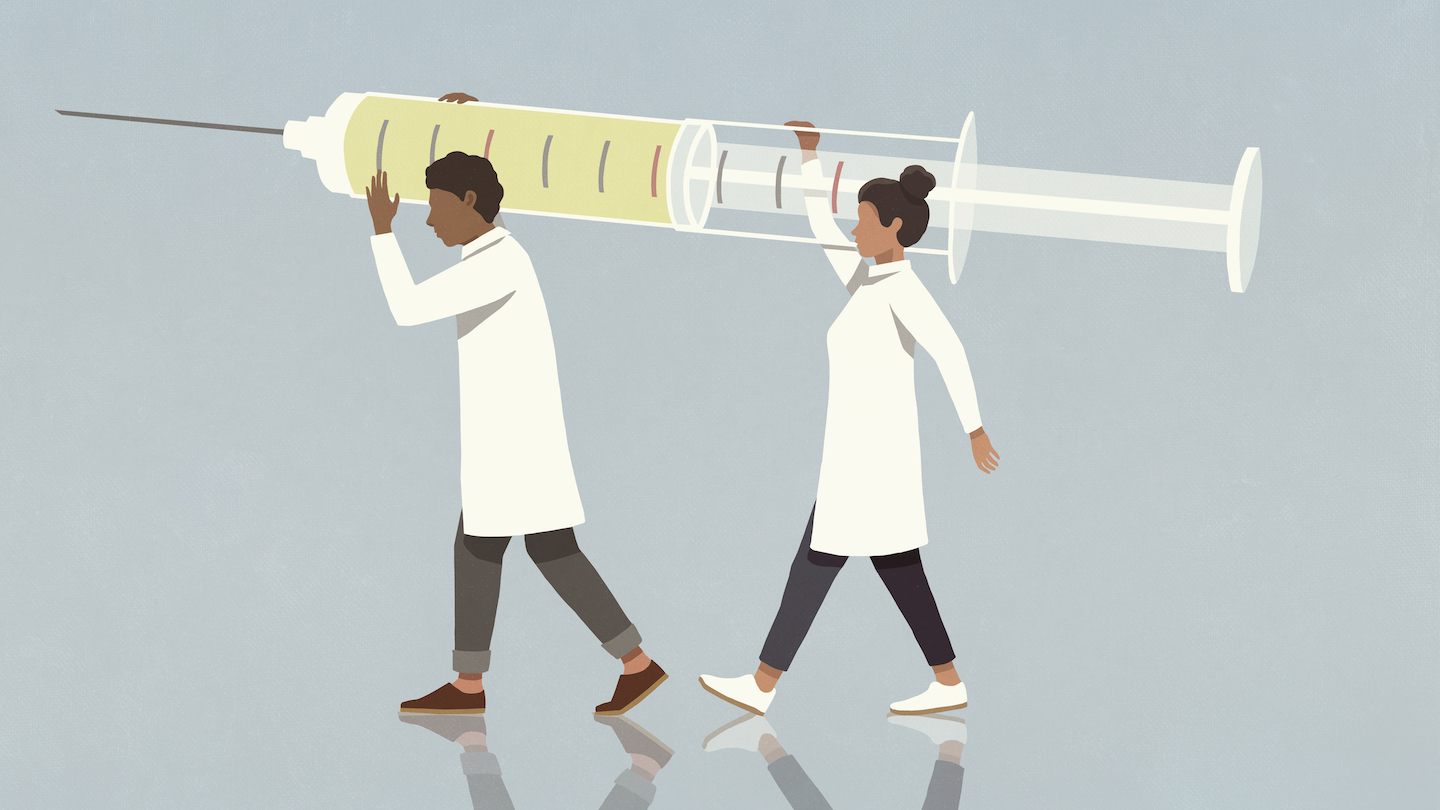Warren Loeppky has been a kids’ dentist for 20 years. Over the last decade, he’s been seeing more tooth decay in his young patients. Not only is it more common, he says, but also more aggressive and severe. Many kids have so much damage that he has to put them under general anesthesia to repair their teeth.
“It’s always sad seeing a young child in pain,” Loeppky says. “Dental decay is very preventable. It breaks your heart to see these young kids that aren’t able to eat.”
Many things can foster tooth decay. Diet and genetics can both play a role, Loeppky notes. Still, he believes part of the problem stems from a decision made in Calgary, where he works. In 2011, this Canadian city stopped adding fluoride to its drinking water.
The decision “was surprising to the general public,” says Juliet Guichon. But it was “shocking and alarming to dentists, to pediatricians, to anesthesiologists and others in the healthcare field,” she says. They “knew what it would mean” for children’s health. Guichon is a legal and ethics scholar at the University of Calgary. She formed a group that pushed for putting fluoride back in the city’s tap water.
Fluoride is a mineral. Soil, water and many foods naturally contain low levels of it. It offers a safe and effective way to prevent tooth decay, studies have shown. It recruits other minerals, such as calcium and phosphate, to teeth. They strengthen a tooth’s enamel, which fends off the acid made by mouth bacteria. Dental health can have a big effect on someone’s overall health. That’s why fluoride is added to toothpaste and other oral-care products.

Many people also get fluoride from tap water. The U.S. Centers for Disease Control and Prevention recommends that communities add 0.7 milligrams of it for every liter of water. It’s up to state and local governments to decide if they want to follow that guidance. In 2022, the CDC reported that nearly two in every three Americans received fluoridated water.
But this water treatment practice is coming under new scrutiny.
In March, Utah became the first state to ban water fluoridation. Florida followed suit in May. Many cities and towns across the country are considering it. And on April 7, one federal official said he would tell the CDC to stop recommending this water treatment.
To understand the impacts of such a move, some researchers have studied public health effects in places that no longer add fluoride to water. Calgary is one such city. Juneau, Alaska, is another. It stopped this water treatment in 2007.
The data may offer a cautionary tale for other cities and towns. Science News spoke with researchers and other experts in both cities. They described what can happen when local governments opt to stop adding fluoride to drinking water.
From the mouths of Calgary’s second-graders
Lindsay McLaren says she never expected to end up studying fluoride. At the University of Calgary, she studies how public policies can affect people’s health. She hadn’t thought much about fluoridation — until 2011. That’s when the Calgary City Council decided to stop adding fluoride to the city’s water.
The move gave McLaren an idea for a study. She’d look at how the dental health of local children fared once fluoride was gone.
She recruited dental hygienists to inspect the mouths of second-graders. Some went to schools in Calgary. Others went to schools in Edmonton. It’s a city in the same province that’s roughly the same size. And it still added fluoride to its water.
In Calgary, the team surveyed second-graders about seven years after water fluoridation had ended. So these kids likely had never been exposed to fluoride in their drinking water. Of 2,649 children, 65 percent had tooth decay. That’s nearly two in every three. In Edmonton, 55 percent of the 2,600 surveyed children had tooth decay.
On a population level, that difference is “quite large,” McLaren says.
“Compared to Edmonton kids, Calgary kids were now considerably worse as far as dental health goes,” McLaren says. Her team looked at other factors, such as diet, social measures and family income. But none of these, she says, could explain the differences between dental health in the two cities’ kids.
And the number of kids with decay wasn’t the only difference. More kids treated for tooth decay-related problems had to be placed under general anesthesia in Calgary than in Edmonton. That finding comes from an April 2024 study in the Canadian Journal of Public Health. It suggests the decay in these kids may have been more severe or extensive. From 2018 to 2019, 32 out of every 10,000 children in Calgary were put under general anesthesia to treat tooth decay. In Edmonton, it was roughly half as many.
The findings don’t surprise local dentists, says Bruce Yaholnitsky. He specializes in gum disease and other mouth issues in Calgary. “This is just obvious to us. But you need to have proper science to prove, in some cases, the obvious.”
Studying medical claims in Juneau
Juneau, Alaska’s capital, showed similar signs of fluoride’s value.
Jennifer Meyer moved to the city in 2015. At the time, she had two young children. Her third was born in Juneau. She was surprised at how many fillings and other dental work other young kids seemed to have.
“I thought ‘Wow, what’s going on here?’ Because I could see a lot of the decay and the repairs,” Meyer says.
Meyer is a public health researcher at the University of Alaska Anchorage. She wondered whether a lack of fluoride might be playing some role.
Before Juneau voted to stop adding fluoride to its water, a six-member commission had reviewed evidence on the value of fluoride. Meyer got a copy of the commission’s report. In it, two commission members opposed to fluoridation made some claims about its risks. Meyer says those claims were “false” and not based on “quality” research.
The commission’s chair criticized anti-fluoride positions. At one point, he wrote that part of the cited research was “junk science.” But in the end, he still recommended that the city stop adding fluoride to its water. He claimed the evidence about the safety of low levels of fluoride was not conclusive. That left the commission’s members split at 3–3.
Afterward, the Juneau Assembly voted to end fluoridation. The practice ended in 2007.
Meyer’s team pored over records from a government program called Medicaid. It helps cover the costs of health-care treatments for people with limited income.
The team compared dental claims made before and after the city stopped using fluoride. They found a big effect on children under age 6. In 2003, when fluoride was still present, these kids had an average of 1.5 procedures to treat tooth decay. In 2012, five years after fluoride use stopped, this number had risen to 2.5 treatments per child.
These extra treatments come at a steep price. The cost, when adjusted for inflation, jumped by an average of $303 per child from 2003 to 2012.
Who ends up paying those higher costs? Taxpayers, Meyer says.
“When politicians decide to withhold a safe and effective public health intervention like fluoridation, they are imposing a hidden health care tax on everyone in their state or community,” Meyer says.

Continued calls to end fluoridation
Today, many who oppose fluoride in water point to a review published last August. It was released by the National Toxicology Program. This U.S. program evaluates the health effects of substances.
That 2024 review has proven controversial. It concluded with “moderate confidence” that more than 1.5 milligrams of fluoride per liter of water was correlated — or linked — with lower IQs in children.
One reason why that statement was controversial: That dose is more than double what the CDC recommends adding to water.
And authors of this review couldn’t tell if lower levels — like those found in treated U.S. drinking water — affect kids’ IQ. Plus, that correlation is not causation. Seeing a lowered IQ does not prove that higher levels of fluoride caused it. Indeed, that warning is noted on the program’s website.
Meyer cautions against making decisions “based on weak or misrepresented evidence.” Choosing to stop adding fluoride, she says, “is not a precaution, it’s negligence.”
Juneau still doesn’t add fluoride to its water. But in 2021, 62 percent of Calgary residents voted to bring it back. That’s more than voted in 1989 to first put fluoride in Calgary’s water. Legal scholar Guichon says McLaren’s study helped get people to vote for it.
“More people voted to reinstate fluoride than voted for the mayor. So that’s a success,” Meyer says. “But in America, we are entering a dark time.”

















